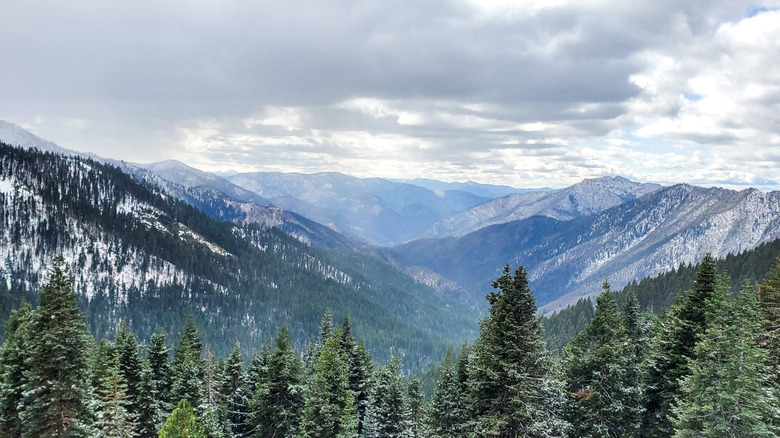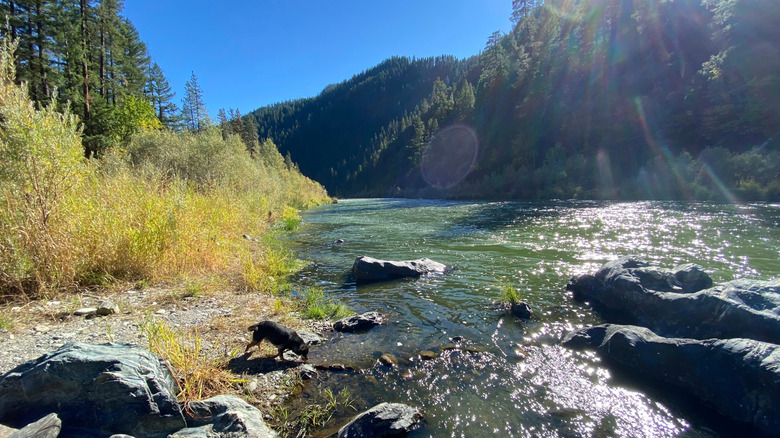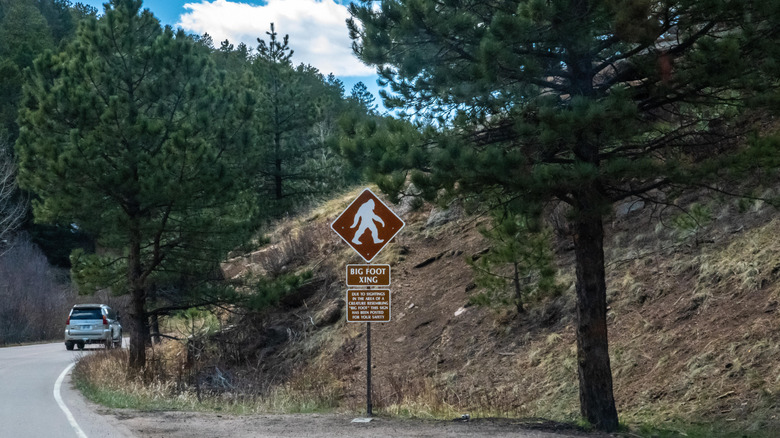
Back in the day when settlers came to Northern California, there were some pretty tough times until pioneers literally struck gold. But once that happened, folks flooded West with dreams, ambition, and happiness. That's how one settlement that cropped up in the Marble Mountains earned its optimistic-sounding name: Happy Camp. Situated on the western side of the mountains in the Klamath National Forest, Happy Camp has remained isolated from the industry and tourism that has modernized so much of the West Coast
wilderness. It's a remote hideaway, perfect for an off-the-radar getaway and return to nature.
Just getting to Happy Camp is no small feat — the only way in is to drive, and it's not located close to any major travel hubs. To its credit, it's the last stop on the Bigfoot Scenic Byway, which passes by and through some of California's most majestic mountains and national forests. Today, Bigfoot lives in Happy Camp — standing 14-feet tall, the metal and wood rendition of the mythical creature greets you upon your arrival in town. From there, the visitor center can guide you off toward such uplifting-sounding treks as the Spirit Lake Trail and the Sky High Lakes Trail.
But the culture here has also been shaped by its Karuk tribal heritage. In fact, half of the town's nearly 600 residents are descended from the Karuk Tribe, a hardworking mountain people who are related to the neighboring Yurok Tribe. As their administrative center, the presence of the Karuk people is felt at Happy Camp as strongly as anywhere in the country, something that has undoubtedly influenced the town's deep connection to the outdoors and the epic landscapes surrounding it.
Read more: The 5 Best Parks Where You Can See Bison Roam (Other Than Yellowstone), According To Visitors
Happy Times In And Around Happy Camp

Visitors to Happy Camp primarily come to get away from it all. The smart devices modern folk can't seem to tear themselves away from barely get service here, and the town is so remote that its only cell phone tower was built within the last 10 years. Instead, visitors can immerse themselves in the beauty of crystalline lakes, marbled stone outcrops, and old-growth forests. Popular day hikes include the Devil's Punch Bowl and Raspberry Lake Trails, both challenging out-and-back trails that take hikers high into the Siskiyou Mountains to bask in clear mountain waters. Particularly intrepid explorers can embark on the Pacific Crest Trail in Seiad Valley, just a 20-mile drive east, as it cuts its way north into Oregon.
Happy Camp sits right on the Klamath River, and it's not unheard of for whitewater rafters to arrive in town on its Class III to Class IV and above rapids. The river boasts plentiful steelhead trout and salmon populations, perfect for fly-fishing. And in the summer, the creeks feeding into the river make for pleasant swimming holes, like the one at Elk Creek Campground. You can even learn how to pan for gold at workshops taught by a group called The New 49'ers. If you can believe it, the Klamath's placer ore deposits still haven't run dry yet — in fact, up to $300,000 worth of gold is sold in the area annually.
The town itself has a few fun sites to visit. Besides the enormous Bigfoot statue, Happy Camp is also home to the largest dreamcatcher in the world. At 33 feet in diameter, it was created by a local artist and dream-catcher enthusiast. In the town center, the Karuk have built the People's Center Museum, where you can learn more about their culture and history.
How To Get To Happy Camp And Where To Stay

The closest international airport to Happy Camp is in Medford, Oregon, a city known as the "Heart of the Rogue Valley" that's home to an excellent wine scene. It's more than a two-hour drive north, so having a car is a must, as there are no buses that head there. You can head south on I-5 before cutting west on State Route 96 once you hit California. Alternatively, take U.S. Route 199 southwest to Cave Junction — a town home to a quirky treehouse resort deep in the forest — before turning off onto winding Indian Creek Road. Which road you take is completely up to you, since both options require similar drive times.
While accommodations in Happy Camp are limited, there are some motels and campgrounds with cabins, as well as places to park an RV. For dining, Happy Camp has a spot for pizza and a deli, plus a grocery store and a convenience store that sells spirits. Make sure you're prepared for rustic settings before embarking on your journey — it'll be an escape to the great outdoors. Happy camping!
Ready to discover more hidden gems and expert travel tips? Subscribe to our free newsletter for access to the world's best-kept travel secrets.
Read the original article on Islands.












